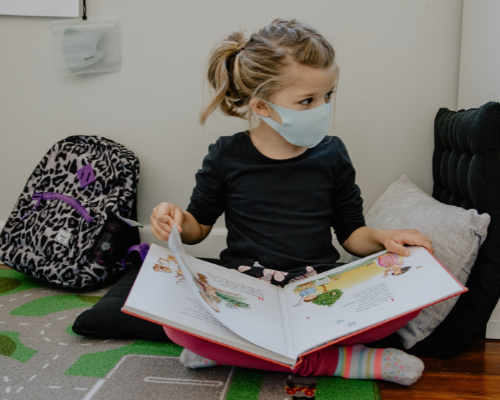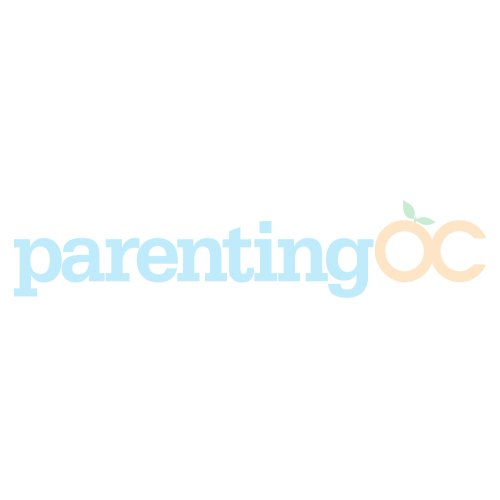Ease some of the stress of this school year’s return to campus with these expert tips on getting your kids back to class.
Parents and professionals agree, the best place for children to learn is in the classroom.
“We want to recommend kids start socializing again,” said Dr. Regine Muradian, a licensed clinical psychologist and expert on anxiety-related issues for children, adolescents and parents, “and we want to return to some sense of normalcy as soon as possible.”
Even the Centers for Disease Control and Prevention (CDC) recently issued updated guidelines that noted a safe return to in-person instruction in fall 2021 as a major goal.
In early July, the California Department of Public Health (CDPH) also updated guidance for all of California’s K-12 schools for the coming 2021-2022 school year in order to align with the CDC’s changes. The guidelines are a mandated public health directive, which all California K-12 schools must be in compliance with to provide what the CDPH calls “a pathway for students to return to a traditional, five-days-per-week, in-person academic model of instruction.”
“There’s no substitute for in-person instruction,” said Dr. Tomás Aragón, director of the California Department of Public Health and State Public Health Office. “The CDC guidance clearly reinforces that as a top priority.”
According to new data posted on California’s Safe Schools for All Hub, more than 99 percent of school districts plan to fully reopen for in-person instruction when the 2021-22 school begins.
Orange County schools, both public and private, are among those currently working to update their reopening plans to comply with the changes.
“School districts must follow the guidance provided by state and county health officials to operate for in-person instruction,” Gunn Marie Hansen, the superintendent of schools at
Orange Unified School District (OUSD), said in a statement.
OUSD will welcome back students on Aug. 18.
Orange County private schools are also remaining vigilant.
“We know that the situation can change quickly,” said Shawna Rhebergen, director of admissions at Heritage Oak Private Education in Yorba Linda. “Our staff is going into the school year knowing that all plans are flexible, and changes may need to be made in order to keep our population as healthy as possible.”
Heritage Oak’s first day of school will be Sept. 8.
On those first days back in class, OC’s schools will be implementing several measures of protection to ensure students’ safety.
Layers of Protection
The CDC’s guidelines acknowledge the fact that many of California’s schools are unable to accommodate physical distancing. As a result, California will layer multiple prevention strategies to protect against COVID-19.
One of those strategies is the continued requirement of face masks. Students and adults must wear masks indoors in school settings when in the presence of students. However, students and staff will no longer be required to wear masks outdoors.
“Masking is a simple and effective intervention that does not interfere with offering full in-person instruction,” said California Health & Human Services Agency Secretary Dr. Mark Ghaly.
Hansen said that OUSD will follow the guidance provided by state and county health officials to operate for in-person instruction, including mask mandates.
“The CDPH stated that it will reassess conditions and determine whether to change mask guidelines no later than Nov. 1,” Hansen added.
Requiring that masks be worn indoors by all in school settings will also ensure that all kids are treated the same.
“At the outset of the new year, students should be able to walk into school without worrying about whether they will feel different or singled out for being vaccinated or unvaccinated,” said Ghaly. “Treating all kids the same will support a calm and supportive school environment.”
The state has said exceptions will be made when it comes to health reasons or disabilities.
Muradian said that it’s important to talk to your child to prevent the bullying of students who don’t wear masks.
“The division starts with us as parents,” Muradian said. “So we have to teach everyone in our community to be respectful of each other’s choices.”
Rhebergen said she doesn’t foresee any differences in the enforcement of guidelines at the preschool and elementary level vs. middle school for Heritage Oak.
“As of now (mid-July), we don’t believe there will be differences,” Rhebergen said. “For summer camp, which has been successfully running since June, the same guidelines apply to all grades.”
Besides masks, the CDPH also stresses the importance of hand-washing on campuses. Washing your hands regularly reduces the risk of germs on your hands and can prevent the spread of COVID-19. In instances where soap and water are not readily available, the CDC recommends alcohol-based hand sanitizers that contain at least 60 percent alcohol, which can sometimes be listed as ethanol or ethyl alcohol on the label.
At Heritage Oak, the staff plans to have supplies like sanitizer available to their students.
“Obviously, an extra mask and individual hand sanitizers are helpful,” said Rhebergen. “However, we have both of those items on-hand should students require them.”
Ventilation and the way schools move the air through their buildings is also important.
Some schools, like those in the Newport-Mesa Unified School District, count optimized ventilation and HEPA air cleaners among their current COVID precautions. Good airflow in classrooms and school buildings helps remove air that may contain the virus.
Of course there are protective measures that can be taken before students get to school too.
Related Posts:
- Pediatrician Explains Summer Camp COVID Safety for Kids, Parenting Advice, Health Expert
- All You Need to Know About the COVID-19 Vaccine for Younger Kids, Expert Advice for Parents
- Mindful Parenting After Pandemic Anxiety
Active Prevention
Much of the action you can take to protect your child against COVID-19 at school actually takes place at home.
Check in with your child each morning for signs of illness. If your child feels sick or has a temperature of 100.4 degrees or higher, they should not go to school. Similarly, if your child has had close contact to a COVID-19 case, they also should not go to school. Ask the school if your child needs COVID-19 testing before coming back. It’s also important that parents identify their school’s point-of-contact to report illness to, since contact tracing is a big part of the CDPH’s plan for a successful return to the classroom.
“The Orange County Department of Public Health has guidelines regarding [testing/contact tracing] and we report any cases on our campus via their system,” said Rhebergen. “Our parents are very forthright with us regarding the health of their children and family members because they know how important that is when trying to keep the campus community healthy.”
Many public schools, like Tustin Unified School District, provide a COVID-19 dashboard on their website that lists accurate and transparent information regarding COVID-19 cases on its campuses.
Also keep in mind, every California school has access to free testing through the robust state testing program for schools.
Getting children 12 years and older, as well as all eligible family members, vaccinated is another way to reduce risk in the classroom.
“One of the most important tools we have to help keep each other safe is getting vaccinated,” said Gregory A. Franklin, superintendent at Tustin Unified School District. “While it is not a requirement to return to school, public health authorities strongly encourage anyone over the age of 12 to get vaccinated as an additional layer of safety.”
The updated guidelines note that achieving high levels of COVID-19 vaccination among eligible students as well as teachers, staff and household members is one of the most critical strategies to help schools safely resume full operations. At this time, those ages 12 and up are eligible to receive the Pfizer-BioNTech COVID-19 vaccine. However, the CDC and the CDPH are not advising schools to require shots for teachers and vaccine-eligible kids.
Before school begins, parents should also make sure their kids are up-to-date on all other recommended vaccines for their age group.
But besides physical health, parents should also be closely monitoring their child’s mental health.
Post-COVID-19 Mental Health Stressors
As parents prepare to send their child back to school, they should consider the state of their mental health as much as their physical health.
According to the CDC Adverse Childhood Experience Study, nearly two out of every three children in the U.S. experience a potentially traumatic event by age 16. Trauma can impact a child’s school performance, impair learning and can cause physical and emotional distress.
“We know more than the physical health of students is at stake as they return to learning this fall,” Chad Jackson, president of Fairmont Private Schools, told Parenting OC. “Our on-staff counselor has been supporting students and families with social and emotional resources throughout the pandemic and will continue to assist our teachers with SEL training as we go back to school.”
Muradian said you can identify post-COVID-19 mental health stressors induced by trauma in your child by paying attention to any changes in their behavior.
“Suddenly they are more anxious, they are socially anxious or nervous about being around certain people,” she said. “It could also be chewing on their nails, nightmares or insomnia and even stomach aches.”
To work through those stressors, Muradian has a few suggestions for parents.
“The first thing I recommend is maintaining open communication,” said Muradian. “Really getting into the emotions about what they are feeling about going back to school.”
Muradian said accessing an emotions chart online and using that to help them identify how they are feeling about the return to school can help them put emotion into words.
“It’s also important that parents then validate those emotions and are empathic,” said Muradian. “It’s not a time to necessarily offer advice.”
You can start by asking your child things like, “How are you feeling about going back to school?” Or “Are you having any worries about going back to school?” Or “What are some things you are excited about?”
Muradian also said parents shouldn’t be discouraged if their child or teen isn’t ready to talk.
“Give them their space and respect, but let them know you will check in later or continue the conversation so they know that you are there, you are present and that you care.”
Another technique Muradian recommends is helping your child identify their negative worries or fears for the coming school year.
“‘I am worried I am not going to do well this year. I am worried am not going to remember my math,’” she said. “‘OK, well why are you worried about that?’ I like sitting down with the child and writing these down because it lets them know that you are with them. It’s different than having this conversation in the car, or with people around. This is a very intentional conversation.”
Muradian stresses that having nightly conversations with your child can really establish that bond and keep the lines of communication open. If your child is still having anxiety about going to school, Muradian said to take baby steps. Driving by the school or going to check out the classroom before school starts can help calm nervousness. Getting the kids back on a school routine with early bed times again two weeks before is a good idea too.
“You take the time to have the conversations and do these things now, so it’s not a shocker when school starts.”
Muradian said that with the exception of extreme cases, going back to the classroom is the right move.
“As a parent, if you feel comfortable with how the school is set up, you feel comfortable with the conditions, then for their mental health, let them go back … they need to be back with their peers,” said Muradian.
The Take-Away
In a statement to Parenting OC, the CDPH recommends parents review the following 7 Layers to Keep Kids and Schools Safe:
Vaccination
Make sure kids 12 and older, as well as all eligible family members, are vaccinated. The vaccine is the best protection against COVID-19. It is a safe and effective way to prevent serious illness and allows students to get back to enjoying the things they love most, including school sports, clubs and social events.
Masks
Masks are simple and very effective. They keep the virus from spreading in the air from one person to another indoors. When your child wears a mask, they are protecting themselves and others on campus.
Hand-Washing
Washing your hands regularly reduces the amount of germs on your hands to prevent the spread of COVID-19 from touching surfaces or others.
Sick? Stay Home
If your child feels sick, keep them home from school so that they can get better faster. Ask the school if your child needs COVID-19 testing before coming back.
Know the Plan
Parents should also ask their child’s school about its COVID-19 Safety Plan. Schools are required to post their COVID-19 Safety Plans on their websites.
Ventilation
Be sure to look into your child’s classroom ventilation information. It’s important schools keep air moving through the classrooms. Good airflow in classrooms and school buildings helps remove air that may contain the virus.
Testing
Get familiar with your child’s school’s plan for the COVID-19 testing program. Know your school’s point person(s) to contact if your child gets sick.
The Essentials
Here are some must-have items for your kids’ back-to-school supply list.
Multiple Face Masks
The CDC still recommends face masks be worn indoors by individuals ages 2 and older who are not fully vaccinated. Child-sized masks are better suited for smaller faces and more likely to be worn properly. You might also consider different masks based on your child’s different extracurricular activities. For example, face shield for a student practicing public speaking or theater or a sports mask for student athletes.
Resealable Bag for Masks
Along with your child’s masks or face-coverings, it’s a good idea to have bags or containers to store them when they are not in use. Make sure the bag is clearly labeled with their name too.
Hand Sanitizer
Of course washing your hands with soap and water for 20 seconds is the best way to protect your child from getting sick. But a bottle of hand sanitizer in your child’s backpack or desk can be helpful for times when they can’t get to a sink. The CDC recommends using an alcohol-based hand sanitizer that contains at least 60-percent alcohol, which can sometimes be listed as ethanol or ethyl alcohol on the label.
Extra School Supplies
While we usually encourage young students to practice good sharing, borrowing a pencil or sharing crayons isn’t the best idea when you’re trying to prevent the spread of germs. Make sure your child has enough of the supplies they need and their own set of tools that are typically communal, like scissors or a pencil sharpener.
Water Bottle
Although most drinking fountains on campuses are out of commission due to COVID-19, it is important for kids to stay hydrated. Even if drinking fountains are operational, you can reduce the risk of germs by sending your child to school with their own reusable water bottle each day.
Disinfecting Wipes
Give your child their own stash of wipes they can use to wipe down their desk and other high-touch areas like door handles or water faucets. Pocket-sized tissues to cover coughs and sneezes are a good idea too.
By Sarah Mosqueda










Leave a Reply